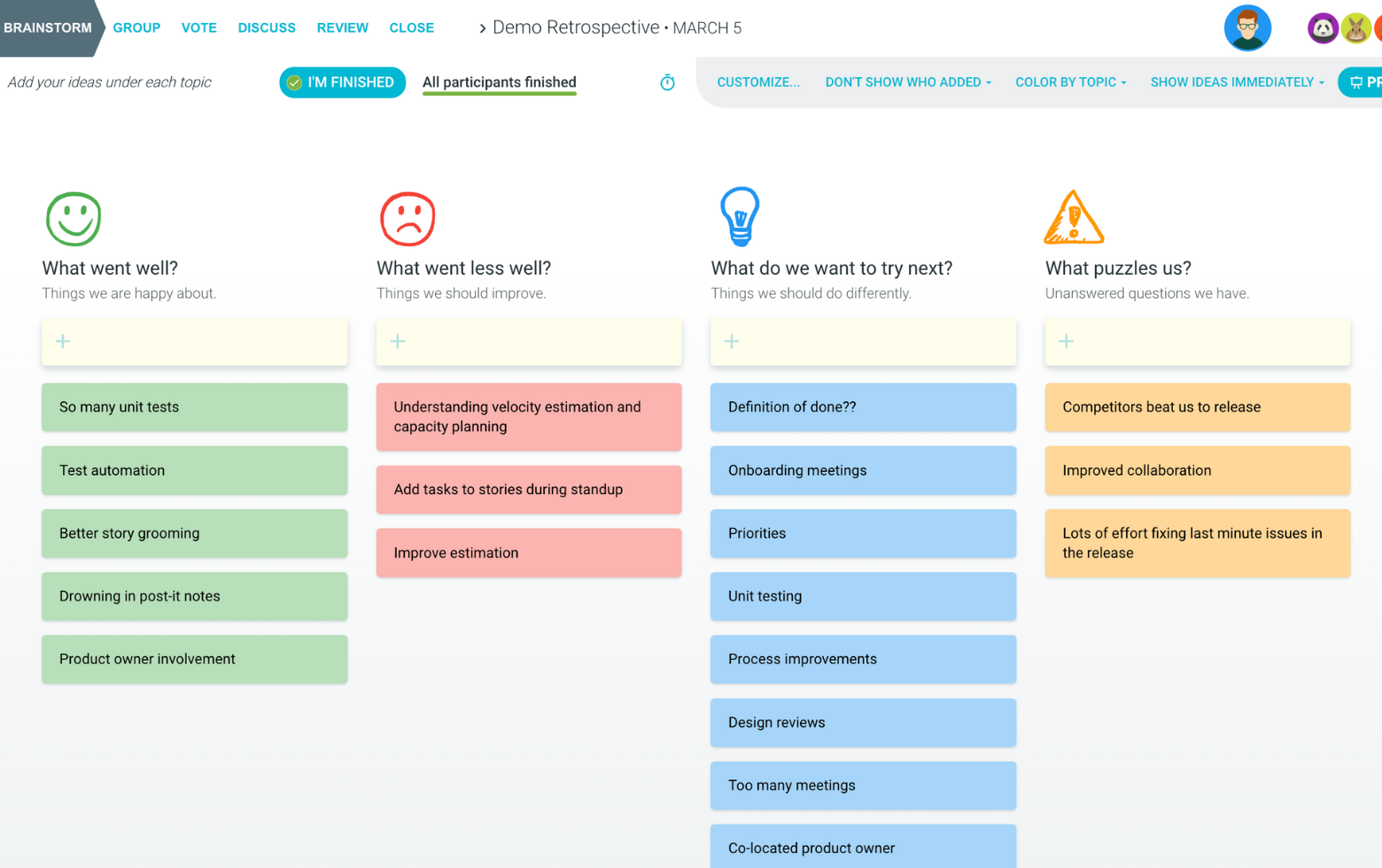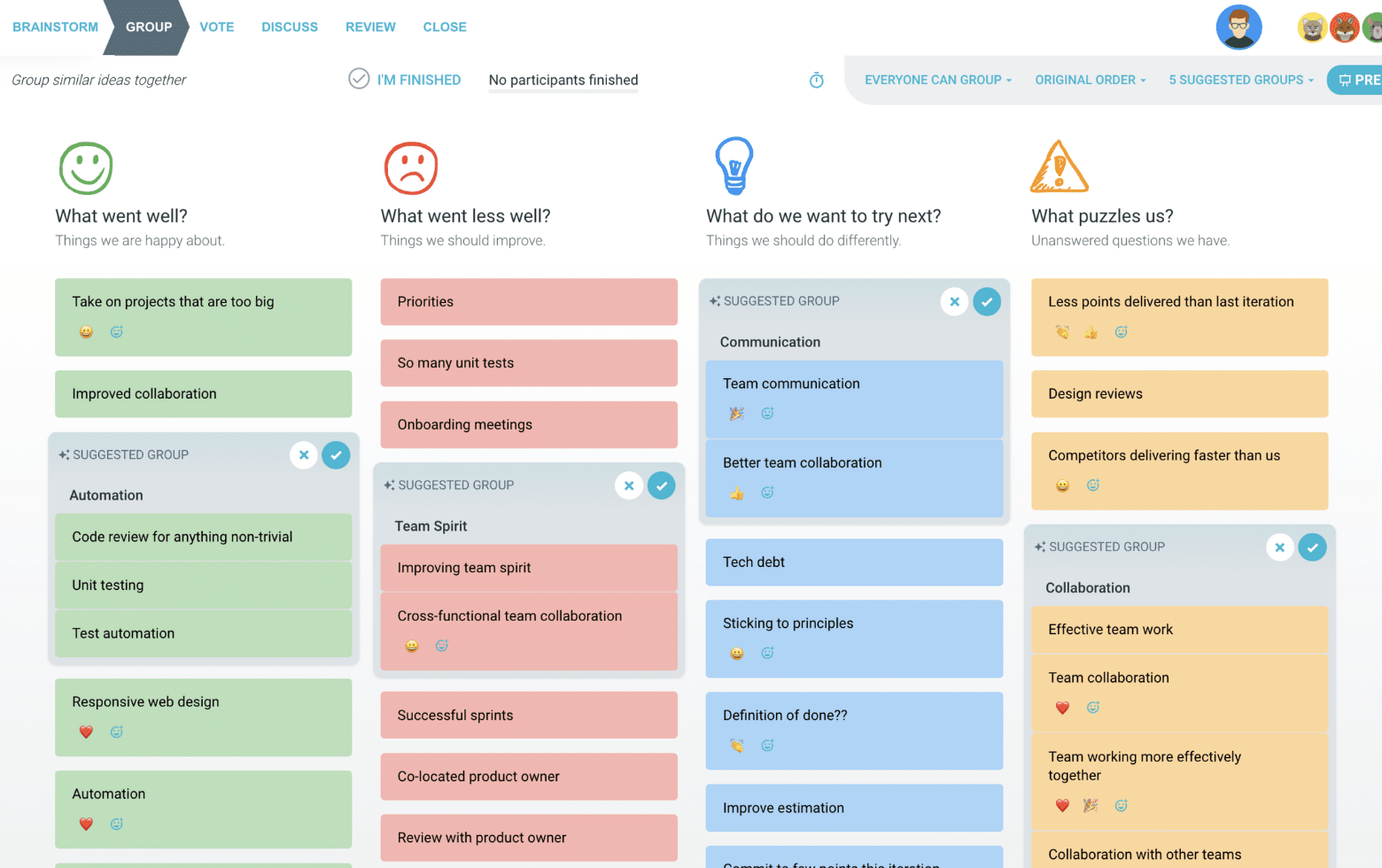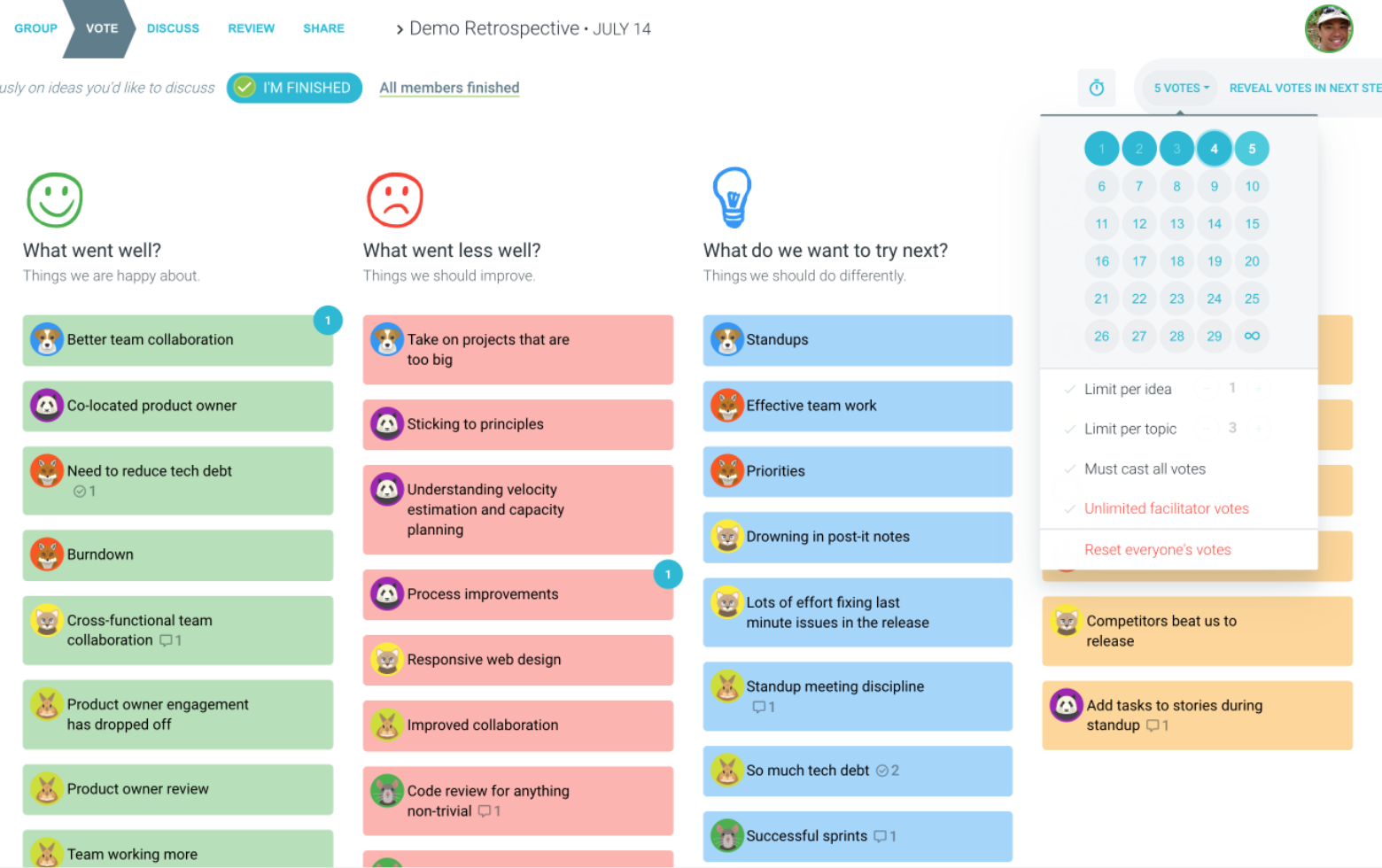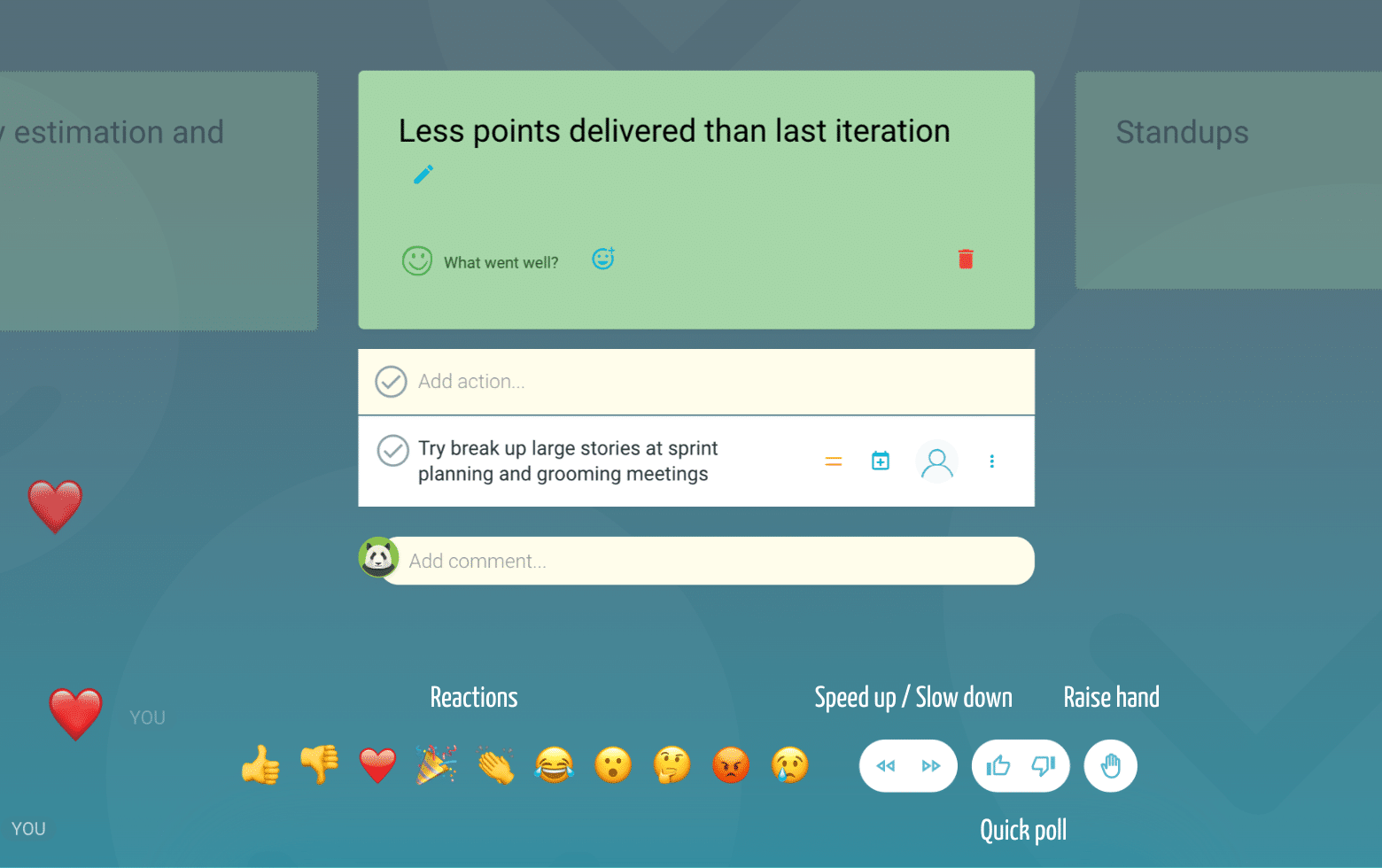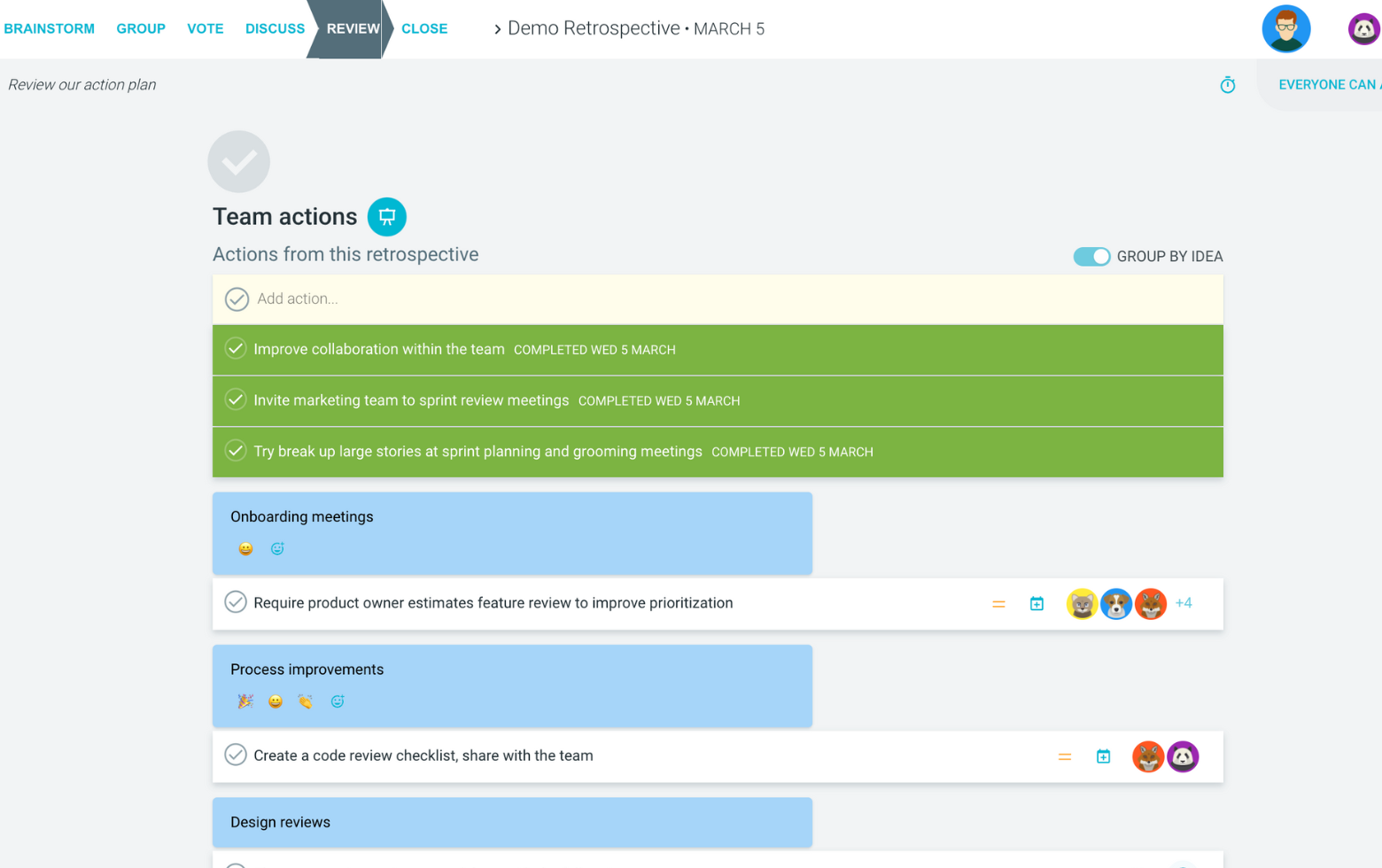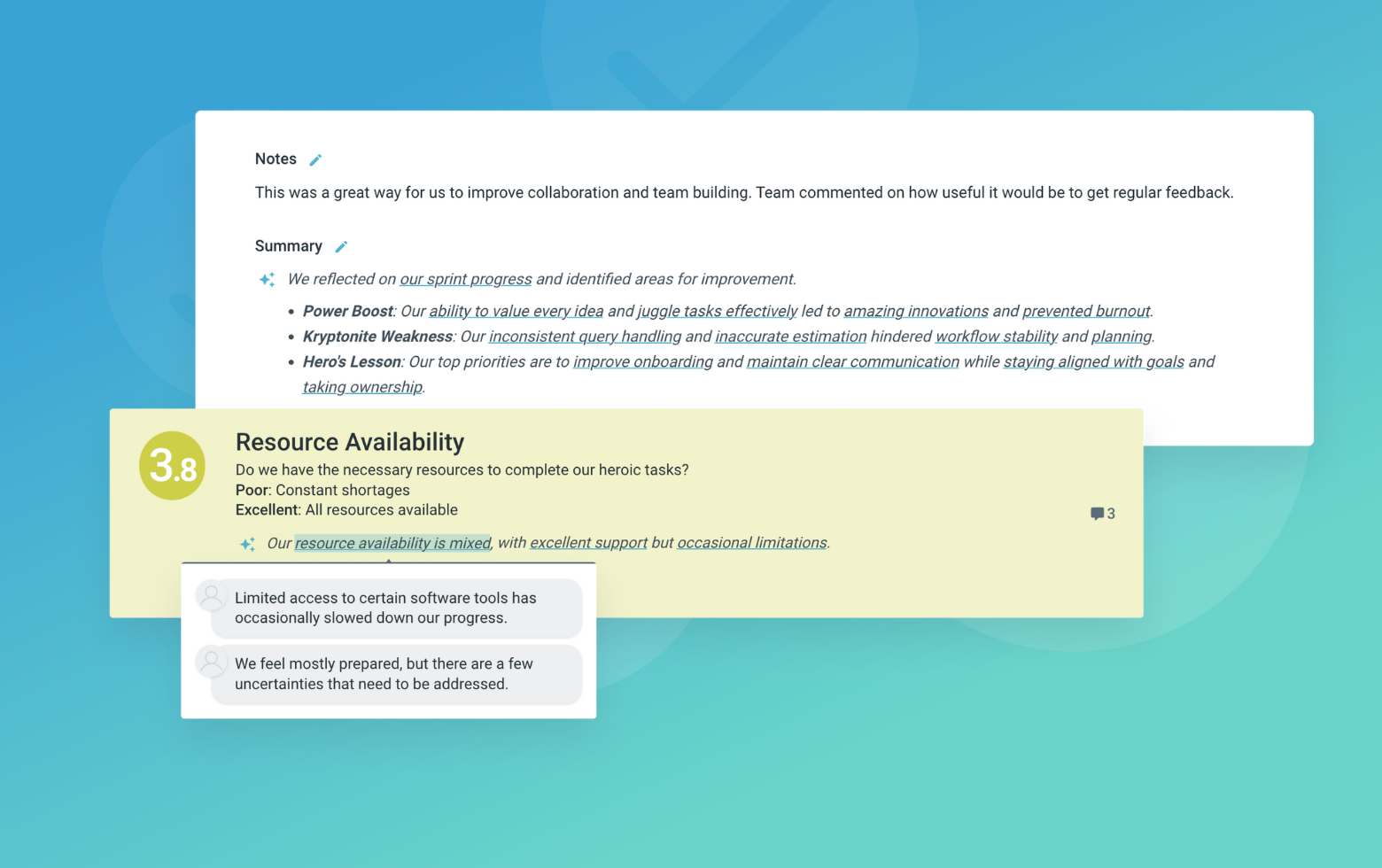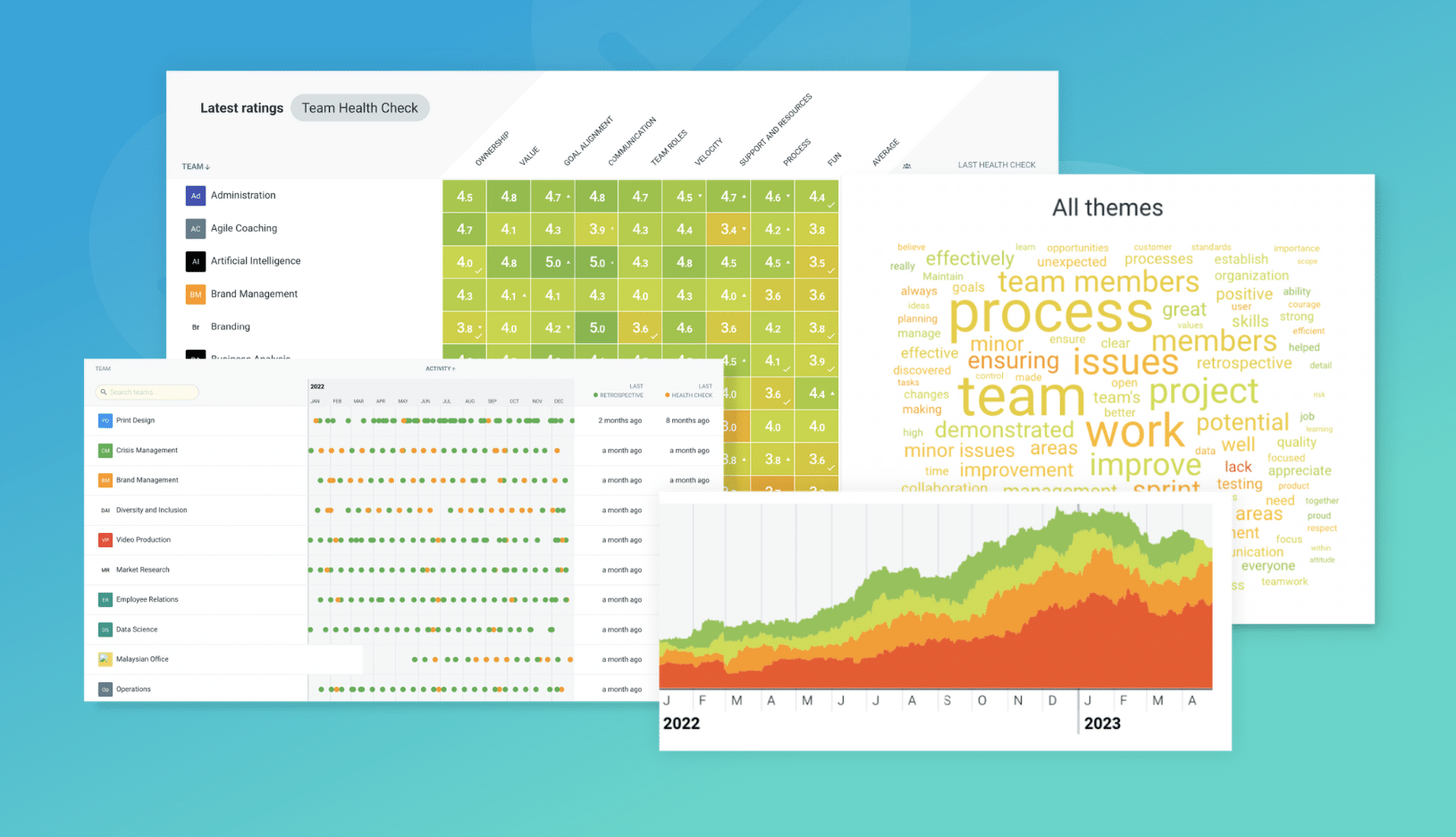Mad Sad Glad retrospective
The mad sad glad retrospective frames discussion around the emotional journey of by your team during the previous sprint, and is a great way to identify opportunities to improve team morale and job satisfaction. The retrospective asks participants to share what made them feel frustrated or annoyed (mad), disappointed (sad) and what made them feel happy or proud (glad).
This mad sad glad style retrospective encourages your team to be more emotionally-aware to help build a positive team dynamic, and provides an opportunity to reflect on issues and opportunities from a different perspective. It is important you remember the retrospective prime directive and focus on events, behaviours and processes – not on assigning blame or ‘guilting’ individuals.
Mad Sad Glad retrospective format
Mad
List the things that are driving you crazy. What is stopping you from performing at your best?
Sad
What are some of the things that have disappointed you or that you wished could be improved?
Glad
What makes you happy when you think about this project? What are the elements that you enjoy the most?

Suggested icebreaker questions for Mad, Sad, Glad retrospectives
- Right now, are you mad, sad, or glad?
- Would you rather be sad or mad?
- What’s made you feel glad recently?
Retro Rehearsal
Invite your team to rehearse the retro referencing something they’ve recently seen.
For example, thinking about your last holiday, what made you feel mad, sad or glad?
Facilitation tips for Mad, Sad Glad retrospectives
- Give people the time and space to open up and share. And, as long as they are not making derogatory remarks and understand the no-blame principal, then each idea should be discussed.
- Don’t try and solve the problems on the spot. It is not always possible and some problems may not actually be fix-able. The goal is simply to work through the issues and then look for solutions afterwards to report back at the next meeting.
- Frequent retrospectives can be better than infrequent deep post-mortems. Rather than running a post-mortem, consider running your retrospectives frequently so you can quickly make changes before it’s too late. Much like steering a big ship, it’s a lot easier to make small changes en route to the destination, rather than finding out at the end you have docked in the wrong port.
- Anonymous or named? Given that mad sad glad is all about sharing how people feel, there are some pros and cons to anonymity:
- Anonymous brainstorming – If you have a positive team dynamic, reasonable maturity and and team communication skills – anonymity is a great way to provide people a safe space to share. By being anonymous, it might draw out something in the project that would otherwise remain hidden beneath the surface. The drawback of anonymity is that it gives people the opportunity to say what they want, play the political game or be insensitive. For the seasoned facilitator who can deal with this, however, the anonymous option can provide invaluable insights.
- Non-anonymous brainstorming – by having names attached to comments, it increases accountability and also means that it automatically starts to moderate the ideas suggested. This will require team members to have a certain level of built trust and courage to say that is on their mind but might reduce the likelihood that the truth may be hidden because of fear of being pinpointed.
- Think of your current team culture and how you think they might react to a mad, sad glad retrospective? If you think you can manage the social risk by setting the right tone, have a team that is relatively respectful and collaborative and focused on solutions, not blame – then anonymous brainstorming is what we would recommend.
How to run Mad Sad Glad retrospective in TeamRetro
Start Your Session in a Click
Log into TeamRetro and choose your template. Customise questions and the workflow to create your perfect retro for your team.
Create Your Team Easily – No Separate Accounts Needed
Brainstorm Individually – Free From Bias
Smart Grouping for Faster Insights
Fair, Flexible, and Fast Voting
Engage, React, and Capture Key Insights
Walk your team through ideas one by one with Presentation Mode. Stay in sync, spark real-time discussions, and capture feedback with comments, live reactions, and polls—all in one place.
Turn Ideas Into Action
Propose next steps with team buy-in, get AI-powered action suggestions, and keep everything in one place. Committed actions sync to your personal dashboard and integrate with your workflow tools—keeping you on track.
Save, Share, and Stay on Track
Get quick AI-powered summaries, add facilitator notes, and store retrospectives in your library for easy access. Schedule your next session and track published actions to keep your team accountable at the next retro.
Turn Team Data into Actionable Insights
Uncover trends, common themes, and key engagement metrics at a glance. Track sentiment shifts, analyze conversations, and monitor completed actions to drive continuous improvement.


